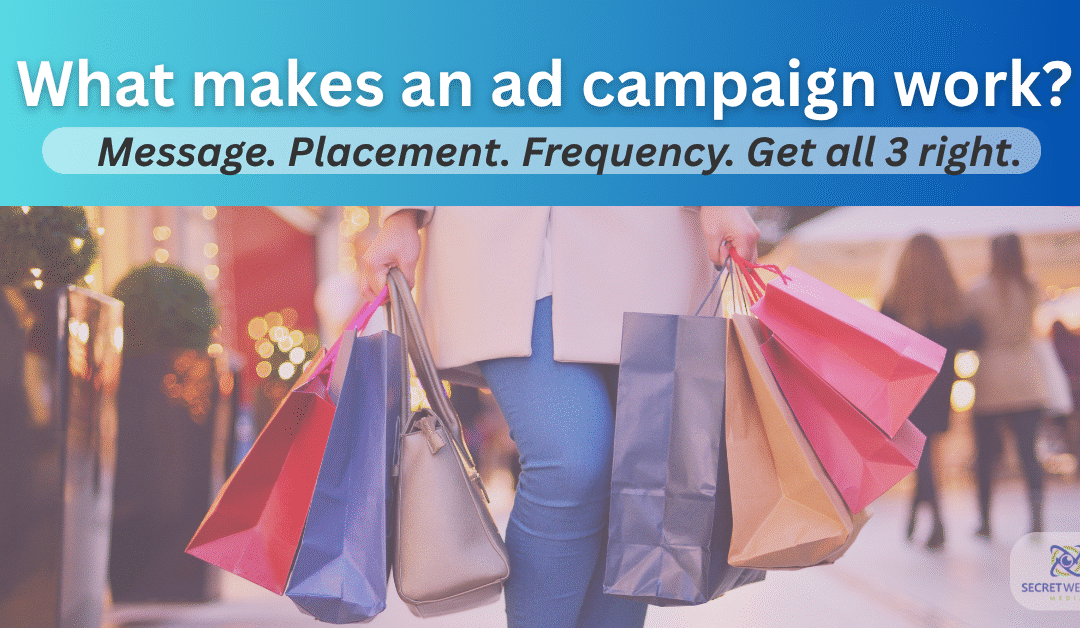How do you come up with an effective ad campaign?
Answer: An effective ad campaign aligns a clear message, the right platform, and enough frequency to reach and convert your ideal customer.
Back when I first started in advertising at a local radio station, I followed what the sales manager told me:
“You need five spots a day. As long as you run five spots a day, it will work.”
That was the industry wisdom—until I met a sales manager from a competitor who mentioned something I hadn’t heard before:
OES scheduling.
I asked my program director if he’d ever heard of it. He had.
That one conversation cracked open the world of media ratings and advertising math for me. While other reps kept selling audience size or catchy creative, I started studying the numbers behind ad performance.
Three years later, I was at the number one station in our market, managing larger accounts—including one agency client who asked me for a schedule that was “double OES.”
So what is OES?
Short version: it’s a formula that factors in time spent listening and audience turnover to determine how often an ad must run each week.
Back then, the standard OES frequency was 3.2 times per week. That agency? They wanted 6.4 to 7.0.
3 Essential Elements of an Effective Ad Campaign
These days, your audience isn’t hearing 20 radio ads a day.
They’re bombarded with 7,000–10,000 messages per day across digital, social, TV, podcasts, email, and more.
So how do we build a campaign that still works?
We follow a 3-part framework:
1. A strong, clear message (what you say)
2. Smart channel selection (where your ideal customer is)
3. Proper frequency (how often they see it)
It sounds simple—but if even one piece is missing, the campaign underperforms.
For business owners and marketing managers trying to increase their return on ad spend (ROAS), dialing in all three elements can turn a modest campaign into a real growth driver.
Frequency Still Matters (Even in Digital)
Today, we use media buying software to analyze frequency across multiple layers. That’s not always practical for small businesses. But you can still ask your media reps for a frequency analysis based on:
-
Who you’re trying to reach
-
How long you’re planning to run
-
Which platforms you’re using
For example:
If you’re running a 90-day campaign, would you rather have all your new customers show up in month three—or grow steadily month after month?
That’s what campaign-level frequency helps you assess. And it’s one of the first things we look at when we audit a new client’s prior ad campaigns.
Wrap-Up: What Makes an Ad Campaign Work?
So, how do you come up with an effective ad campaign today?
It starts with clarity in what you say, where you say it, and how often it’s said.
When all three of those elements work together, your message sticks—and your results grow.
Want help building a better campaign?
Check out our blog series explaining the full 4-part framework for creating ads that actually work.
Frequently Asked Questions
What makes an ad campaign effective?
An effective ad campaign combines a clear message, the right platform, and consistent exposure to the right audience.
What is ad frequency and why does it matter?
Ad frequency is how many times a customer sees your message. Without enough repetition, even the best ad won’t stick—or convert.
What tools or resources do you recommend for improving ad performance?
We’ve put together a free guide with simple, battle-tested strategies that can make a big impact—even if you’re not ready to outsource. It’s called The Field Guide to Information Warfare, and you can grab your copy here.

